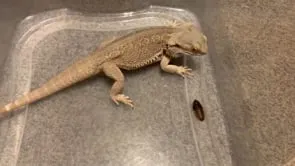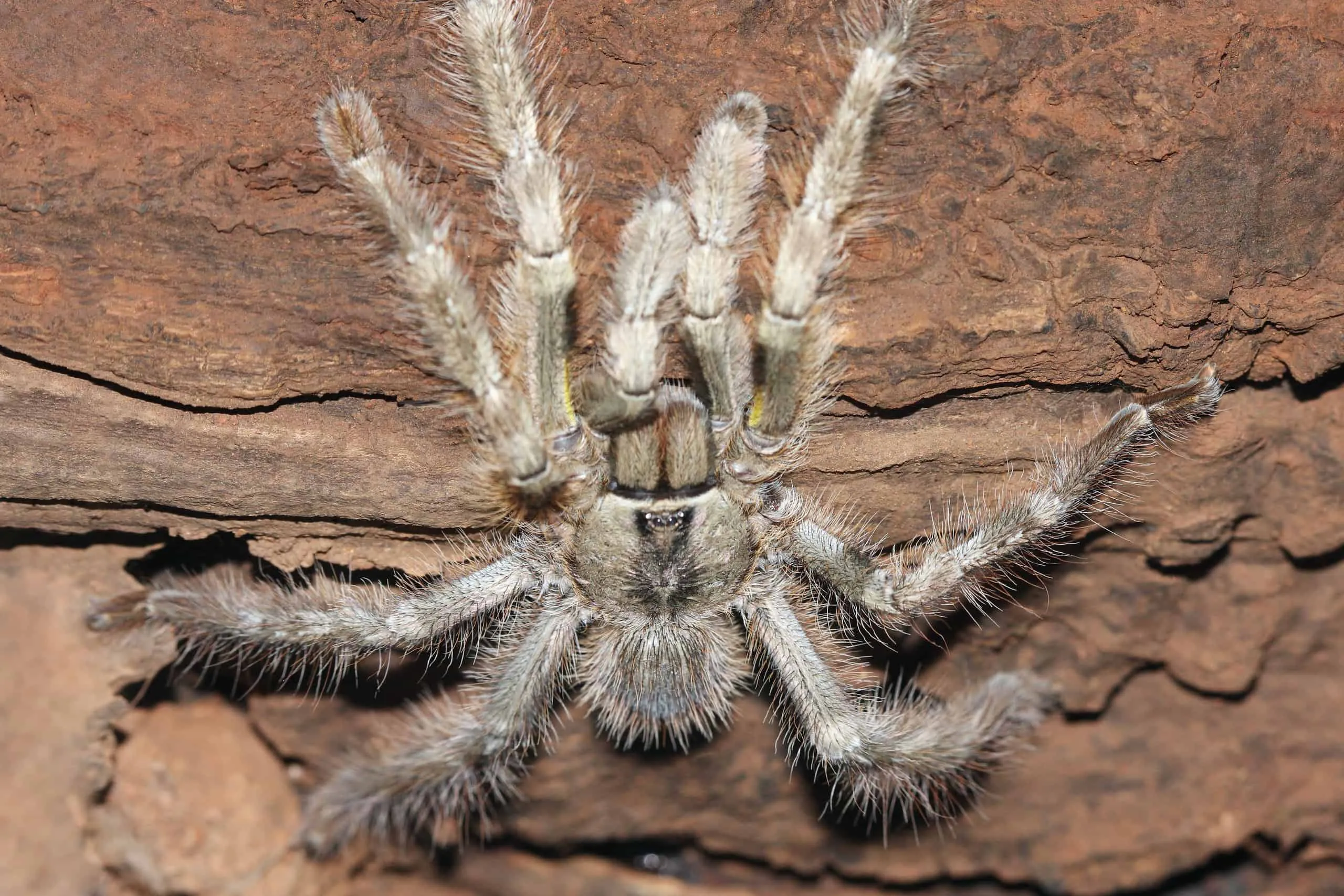What Influences Tarantula Lifespan
Understanding the lifespan of a pet tarantula is crucial for any aspiring or current owner. These fascinating creatures have varying lifespans depending on several factors, making it essential to be well-informed. Unlike many other pets, tarantulas can live for many years, even decades in some cases. The longevity of a tarantula is influenced by a variety of aspects, including their sex, species, environmental conditions, and overall health. By understanding these factors, you can provide the best possible care for your tarantula and potentially increase its lifespan. This guide will delve into the key elements that affect how long these amazing arachnids live, providing you with valuable insights into tarantula care.
Sex Matters
One of the most significant determinants of a tarantula’s lifespan is its sex. Female tarantulas generally live much longer than males. This difference is due to the biological roles each sex plays and their respective life cycles. The disparity in lifespan is a critical factor to consider when acquiring a tarantula, as it can significantly impact the long-term commitment you are making as a pet owner. Understanding the differences in lifespan between males and females can also help you make informed decisions about the type of tarantula you choose and how you care for it, ensuring a rewarding experience.
Female Tarantulas

Female tarantulas are known for their impressive longevity. They can live for many years, with some species living for over 20 years or even longer. The longevity of female tarantulas is attributed to their slower metabolism and the fact that they do not have the same pressures associated with mating and reproduction as males. This extended lifespan makes them a more substantial commitment for pet owners but also offers the opportunity to enjoy the companionship of these creatures for a more extended period. Providing proper care, including a suitable environment, diet, and health maintenance, is essential for maximizing the lifespan of a female tarantula.
Male Tarantulas
Male tarantulas, on the other hand, have a much shorter lifespan compared to their female counterparts. After reaching maturity, male tarantulas typically live for only a few years, often just one or two. This shorter lifespan is largely due to the physical and metabolic demands of mating. Once a male tarantula reaches maturity, it will actively seek out mates, which can be a taxing process. After mating, the male tarantula’s life cycle often comes to an end. While their lifespan is shorter, male tarantulas can still be wonderful pets, and understanding their life cycle will help you provide the best possible care during their time with you.
Species and Size
The species and size of a tarantula also play a crucial role in determining its lifespan. Different tarantula species have inherent variations in their longevity, and the size of the tarantula often correlates with how long it will live. Larger species tend to live longer than smaller ones, due to their slower metabolisms and slower maturation rates. When choosing a tarantula as a pet, it is important to research the specific species to understand its expected lifespan and care requirements. This knowledge will help you provide the appropriate environment and care, ensuring your tarantula thrives for as long as possible. Understanding the species-specific needs will also help you manage expectations and plan for the long-term commitment of owning a tarantula.
Smaller Species

Smaller tarantula species generally have shorter lifespans compared to their larger counterparts. These species tend to mature faster and have a quicker metabolism, which contributes to their shorter lifespans. While they may not live as long as the larger species, smaller tarantulas can still provide years of enjoyment and fascinating observation. Providing the correct environment and diet, tailored to their specific needs, will help maximize their lifespan. Researching the specific care requirements for your chosen species is vital, as they have different needs based on their size and origin. Proper care ensures that your smaller tarantula can live out its natural life cycle, providing a rewarding pet-owning experience.
Larger Species
Larger tarantula species are known for their impressive lifespans. Female tarantulas of these species can often live for over 20 years, and sometimes even longer. Their extended lifespans are due to their slower metabolic rates and slower maturation processes. This offers a more substantial commitment for pet owners. Proper care, including maintaining a stable environment, providing a balanced diet, and regular health checks, is key to maximizing their longevity. Owning a larger tarantula can be a very rewarding experience, but it is essential to be prepared for the long-term responsibility and to provide the necessary care throughout their life cycle. The investment in their well-being will ensure you can enjoy their presence for many years.
Environmental Factors
The environment in which a tarantula lives significantly impacts its lifespan. Maintaining the correct temperature, humidity, and overall enclosure conditions is crucial for the health and longevity of your pet. Tarantulas are ectothermic animals, meaning they rely on their environment to regulate their body temperature. Providing a stable and suitable environment can help prevent stress and health issues, which can ultimately affect lifespan. Additionally, ensuring that the enclosure is clean and appropriately sized for the tarantula is essential. Understanding these environmental factors and making the necessary adjustments will contribute significantly to your tarantula’s overall well-being and longevity.
Temperature and Humidity

Maintaining the correct temperature and humidity levels in your tarantula’s enclosure is essential for its health and survival. Each species of tarantula has specific requirements, which must be met to ensure optimal living conditions. Fluctuations in temperature or humidity can lead to stress, health problems, and a shortened lifespan. Regularly monitoring the environment with a reliable thermometer and hygrometer is a must. Adjustments can be made through the use of heat sources, humidifiers, or ventilation to maintain the correct levels. Consistent monitoring and appropriate adjustments are crucial for providing a healthy and long-lasting environment for your tarantula. Ensuring the appropriate environment can also reduce the risk of respiratory issues and promote successful molting.
Diet and Nutrition
A well-balanced diet is crucial for the health and longevity of your pet tarantula. Tarantulas are carnivores, and their diet primarily consists of insects. Providing a variety of appropriately sized insects, such as crickets, roaches, and mealworms, is important. Feeding your tarantula appropriately will help it grow properly and maintain a healthy weight. Overfeeding can also be harmful, leading to health issues, so it is vital to avoid overfeeding. Supplementing the diet with calcium and other essential nutrients can also be beneficial, particularly for growing tarantulas. Regularly offering fresh water is another important aspect of their diet, ensuring they stay hydrated. A balanced diet is a significant factor in ensuring your tarantula thrives and lives a long, healthy life.
Common Health Issues
Like any pet, tarantulas can be susceptible to certain health issues. Understanding these common problems can help you proactively maintain the health of your tarantula. Some of the issues you might encounter include mites, fungal infections, and injuries sustained during molting. Regularly inspecting your tarantula for any signs of illness or abnormalities, such as lethargy, changes in behavior, or physical symptoms, is important. Providing a clean and appropriate environment, along with a balanced diet, can help minimize the risk of these health issues. If you suspect your tarantula is sick, consulting with a veterinarian who specializes in exotic pets is essential for proper diagnosis and treatment. Early detection and intervention will improve the tarantula’s chances of recovery and longevity.
Molting and Its Impact

Molting is a natural process in tarantulas where they shed their exoskeleton to grow. This process can be stressful, but it is essential for their growth and health. During molting, tarantulas are vulnerable and susceptible to injury. It is important to create a safe environment for the tarantula during this time. Ensure the enclosure has sufficient humidity and is free from disturbances. Providing a hide or shelter where the tarantula can feel secure is also helpful. Successful molting is essential for their overall health, and the frequency of molting decreases as they mature. Understanding the molting process will help you support your tarantula during this crucial time. Improper conditions or disruptions can cause problems with molting, potentially impacting their lifespan.
How to Extend Lifespan
While the natural lifespan of a tarantula is determined by several factors, you can take steps to extend your pet’s life and ensure it thrives. Providing the correct environment is essential, including maintaining the right temperature and humidity levels specific to the species. A well-balanced diet with appropriate food items and portion sizes is also crucial. Regular health checks and monitoring for potential issues can help address any problems early. Avoiding stress and handling the tarantula carefully will minimize the risk of injury and ensure a calm environment. By understanding the needs of your tarantula and providing consistent care, you can maximize the chances of your pet living a long and healthy life. Responsible pet ownership includes being well-informed and committed to providing the best possible care throughout the tarantula’s lifespan. This care not only enhances their longevity but also creates a more fulfilling experience for both the owner and the pet.
